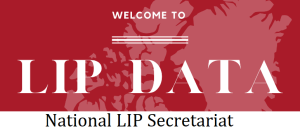Top Non-Official Home Languages – All Immigrants: Census
LANGUAGE
Home Language: Refers to the language the person speaks most often at home.
Knowledge of English or French: Refers to whether the person can conduct a conversation in English only, French only, in both official languages, or in neither official language. For a child who has not yet learned to speak, this includes languages that the child is learning to speak at home.
Non-Official Languages: Refers to languages other than English or French.
NOTE – DIFFERENCES BETWEEN 2006 AND 2016 DATA: The charts for “Top Non-Official Home Languages” are based on the language spoken most often at home (other than English or French). The 2006 data is for the home languages of the first generation population (i.e., immigrants and non-permanent residents), while the 2016 data is for the home languages of immigrants only (i.e., does not include non-permanent residents).
SOURCE DATA
2006 Dashboard Data: Statistics Canada. 2006. Census of Population. Custom tabulations.
2016 Dashboard Data: Statistics Canada. 2016. Census of Population. Custom tabulations.
2021 Dashboard Data: Statistics Canada. 2021. Census of Population. Custom tabulations.
Definitions: Statistics Canada. 2023 (updated). Dictionary, Census of Population, 2021. Website.

 Top Non-Official Home Languages – All Immigrants: Census in the Sustainable Development Goals
Top Non-Official Home Languages – All Immigrants: Census in the Sustainable Development Goals
Click on the SDG to reveal more information
10. Reduce inequality within and among countries
The international community has made significant strides towards lifting people out of poverty. The most vulnerable nations – the least developed countries, the landlocked developing countries and the small island developing states – continue to make inroads into poverty reduction. However, inequality still persists and large disparities remain in access to health and education services and other assets.
Additionally, while income inequality between countries may have been reduced, inequality within countries has risen. There is growing consensus that economic growth is not sufficient to reduce poverty if it is not inclusive and if it does not involve the three dimensions of sustainable development – economic, social and environmental.
To reduce inequality, policies should be universal in principle paying attention to the needs of disadvantaged and marginalized populations.
Related Top Non-Official Home Languages – All Immigrants: Census Targets
By 2030, empower and promote the social, economic and political inclusion of all, irrespective of age, sex, disability, race, ethnicity, origin, religion or economic or other status
Ensure equal opportunity and reduce inequalities of outcome, including by eliminating discriminatory laws, policies and practices and promoting appropriate legislation, policies and action in this regard
Adopt policies, especially fiscal, wage and social protection policies, and progressively achieve greater equality



